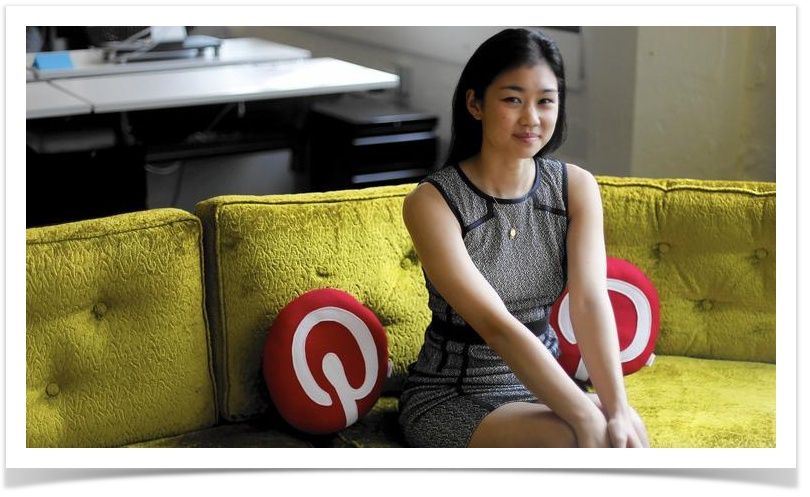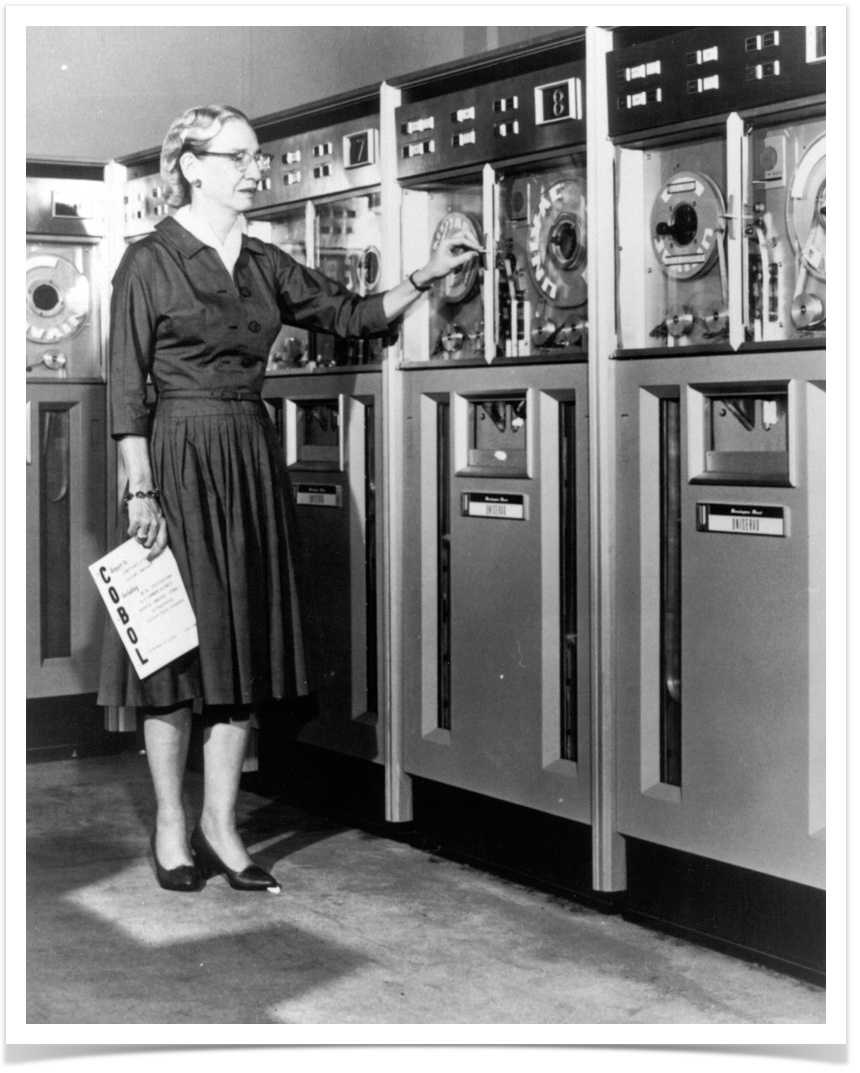In the News - 2014 and prior
Scholarships for Women Studying Information Security (SWSIS)
Since 2011, Applied Computer Security Associates, sponsor of the ACSAC and NSPW conferences, has offered scholarships for women in security-related undergraduate and masters' degree programs through the Scholarships for Women Studying Information Security (SWSIS, www.swsis.org).
Thanks to a $250,000 4-year contribution by Hewlett-Packard company in early 2014, ACSA expanded our program to award 11 scholarships for the 2014-15 academic year. The Committee on the Status of Women in Computing Research (CRA-W), an arm of the Computing Research Alliance, led selection of scholarship winners.
Information about the 11 SWSIS Scholars (scholarship winners) is available at www.swsis.org. ACSA, CRA-W, and HP are pleased to announce that applications for 2015-16 scholarships are open Dec 15 2014 - Feb 15 2015. To apply, an applicant must provide:
- An essay describing her interest and background in the information security field.
- A current transcript.
- A resume or CV.
- At least two letters of reference (typically from faculty members).
- Her university name and class status. The scholarship is renewable for a second year subject to availability of funds, given proof of satisfactory academic progress. Preference is for US citizens or permanent residents; funds are available for use at any US campus of a US university.
More information at www.swsis.org or swsis@swsis.org Jeremy Epstein, Director, Scholarship Programs Applied Computer Security Associates, Inc. Rebecca Wright, CRA-W Director for SWSIS Computing Research Association Committee on the Status of Women in Computing Research
 Image Modified
Image Modified
How U. of San Diego Added 8 Female STEM Professors
Source: Chronicle of Higher Education - November 17, 2014
Lisa M. Baird, a professor of biology at the University of San Diego, is the principal investigator in a faculty effort that led to the hiring of a cohort of eight women in science, technology, engineering, and mathematics there. Here is her account of that effort, as told to Mary Bowerman.
Approximately 60 percent of our majors in the STEM disciplines at the University of San Diego are female, but within those disciplines the percentage of female faculty isn’t even close to that. Our desire was to promote opportunities for women in STEM fields and have a more representative faculty. Read full article...
 Image Modified
Image Modified
Source: Society for Human Resource Management - October 23, 2014
(Awareness + Breakthrough learning) * Changed perspective = Impact for your team
In addition to awareness, there is breakthrough learning, both culturally and technically, available at the conference, and this will provide you with a multiplier of changed perspective. The results of this formula will enable you to make a tremendous impact in both your work and life. Read full article
 Image Modified
Image Modified
When Women Stopped Coding
Source: NPR Planet Money - October 21, 2014
Modern computer science is dominated by men. But it hasn't always been this way.
A lot of computing pioneers — the people who programmed the first digital computers — were women. And for decades, the number of women studying computer science was growing faster than the number of men. But in 1984, something changed. The percentage of women in computer science flattened, and then plunged, even as the share of women in other technical and professional fields kept rising.
What happened? Read full article to find out...
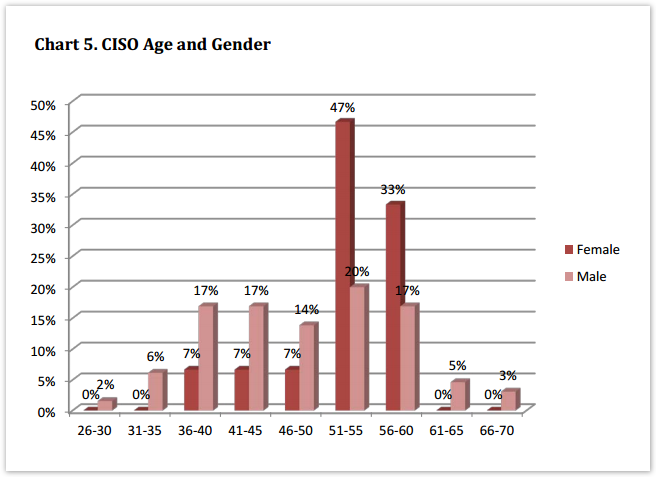 Image Modified
Image Modified
Gender Gap in IT Security
Source: Inside Higher Ed - October 17, 2014
Women who rise to the position of chief security information officer are already a rare sight in higher education, but over the next decade and a half, they may become an endangered species.
The 2014 Higher Education Chief Information Security Officer Study, released this week, contains grim news about the future of university IT offices, where men already far outnumber women. Four in every five CISOs who are women are 51 years or older, and two in five plan to retire within the next 10 years.
“In the younger age brackets, women were represented in single digits,” Wayne A. Brown, founder of the Center for Higher Education Chief Information Officer Studies, or CHECS, writes in the report. “Their anticipated retirement combined with the differences in age for the men and women CISOs strongly suggest that the percentage of female CISOs will further decline in the future if the present circumstances remain unchanged.” Read full article
 Image Modified
Image Modified
Why Women Are Better Managers Than Men
Source: Gallup Business Journal - October 16, 2014
Gallup data suggest that female bosses tend to be more engaged than their male counterparts, although only one-third of working Americans have a woman as their boss. "Overall, female managers eclipse their male counterparts at setting basic expectations for their employees, building relationships with their subordinates, encouraging a positive team environment, and providing employees with opportunities to develop within their careers," write Kimberly Fitch and Sangeeta Agrawal.
Leaders should also know that female managers themselves tend to be more engaged than male managers. Gallup finds that 41% of female managers are engaged at work, compared with 35% of male managers. In fact, female managers of every working-age generation are more engaged than their male counterparts, regardless of whether they have children in their household. These findings have profound implications for the workplace. If female managers, on average, are more engaged than male managers, it stands to reason that they are likely to contribute more to their organization's current and future success. Read full article
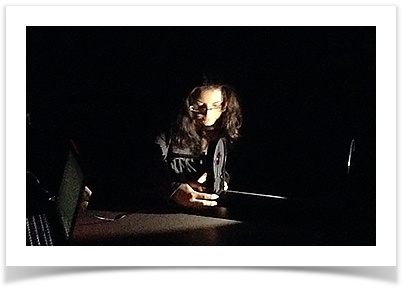 Image Modified
Image Modified
Source: National Science Foundation - October 7, 2014
In a study done by the American Astronomical Society, which includes most professionals and many students in these fields, only 21 percent of its members is female, which is light-years ahead of the representation of African Americans and Hispanics/Latinos--1 percent and 3 percent, respectively.
Not surprisingly, those numbers have prompted a call for diversity within the astro community.
In 2008, the National Science Foundation (NSF) started a program called Partnerships in Astronomy and Astrophysics Research and Education (PAARE, pronounced "pair"). Its goal was to identify and explore ways to repair "leaks" in the astronomy/astrophysics career pipeline for minority students. In many cases, minority students would start out studying astronomy, but they weren't making it all the way through the pipeline to pursue science careers. Read full article
 Image Modified
Image Modified
Want to Run a Top Company? Science Study
Source: Makers - September 19, 2014
More than 30 percent of the women on Fortune’s Most Powerful Women in Business list studied science for their undergraduate degree, including number one Ginni Rometty, Chairman and CEO of IBM. Click through above to meet the other powerful women who spend their young years conducting experiments and solving equations in hallowed university halls. They range from Yahoo!'s CEO Marissa Mayer, who specialized in artificial intelligence while earning her B.S. in symbolic systems from Stanford, to Mary Callahan Erdoes, CEO at J.P. Morgan Asset Management and the only woman to complete a math major at Georgetown in 1989.
These women have a variety of business experiences and run different kinds of companies, but it seems one common denominator is a penchant for STEM fields. Hopefully as programs like Girls Who Code gain traction and women like Megan Smith ascend to the White House, we'll see more and more women launching into science degrees. View Slideshow
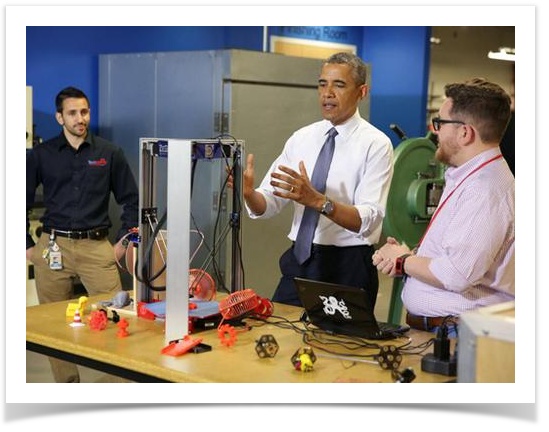 Image Modified
Image Modified
White House Pulls New CTO from Google
Source: InformationWeek Government - September 4, 2014
President Barack Obama has recruited Megan Smith from Google[x], the firm's advanced technology exploration arm, to serve as chief technology officer of the United States. She replaces CTO Todd Park, who is stepping down in order to return to his family in California -- where he has been asked to continue to help the federal government recruit for top technology talent.
Smith's recent projects at Google[x] included co-creating the "SolveForX" innovation community project and the company's "WomenTechmakers" tech-diversity initiative, according to the blog post. Read full article
 Image Modified
Image Modified
Infographic: Where are all the women in STEM?
Source: ECN Magazine - September 3, 2014
When it comes to women in STEM (science, technology, engineering, mathethmatics) the numbers just don’t add up. Even though the number of women majoring in STEM (and attending college) has increased in the past few decades, the number of women who actually enter the fields has barely increased at all. There probably isn’t one reason behind the dearth of women, but hopefully all the sciences will see an influx of women soon. View full infographic
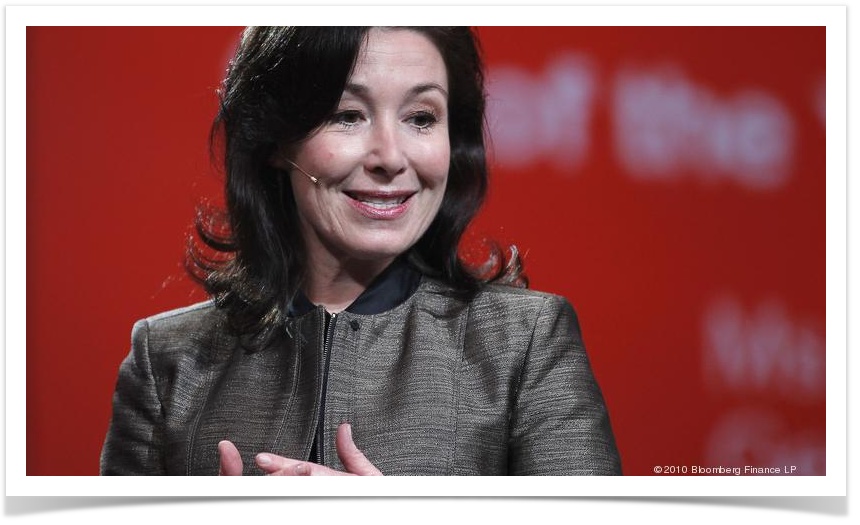 Image Modified
Image Modified
Oracle's Safra Catz calls for STEM education focus
Source: Denver Business Journal - August 28, 2014
Safra Catz, Oracle co-president and CFO, opened the second day of the Colorado Innovation Network Summit in Denver with a call for leadership in science and technical education to keep the U.S. from falling behind in economic growth and technology.
Catz spoke about workforce talent and innovation to the crowd of executives, entrepreneurs and academic leaders gathered for the third year of the invite-only COIN event.
Catz’s life — growing from a young Israeli immigrant to one of Silicon Valley’s most powerful executives at software and business computing giant Oracle — is an example of the American Dream, she said. Read full article...
 Image Modified
Image Modified
MSU study looks at gender and 'image management'
Source: WKAR.org - August 26, 2014
Say you’re a woman, and you’re interviewing for a job in a traditionally male-dominated field like engineering. What qualities about yourself should you highlight in your interview? A new MSU study offers some ideas.
Current State’s Melissa Benmark spoke with one of study’s co-authors, Ann Marie Ryan. She’s a professor of organizational psychology at MSU. Visit wkar.org to listen to the story.
 Image Modified
Image Modified
Why the Most Successful Organizations Have Women and Millennials in Charge
Source: Fast Company - August 5, 2014
A new global study shows that when women and twenty-somethings lead, big things follow.
Gender and generational gaps have recently become big buzz words in the business world. According to a new study, it's not a passing trend: Having millennials and women in leadership positions directly correlates with the success of a company.
The Global Leadership Forecast looked at the workforce issues affecting 13,124 leaders from around the world, representing 48 countries and 32 major industries.
Millennials present a unique catch-22: Their presence in leadership positions related to the company's growth rate. Companies with a 30% proportion of young people in higher roles saw "aggressive growth," according to the study. When it's more like 20%, they saw "little to low growth" rates. At the same time, they were the least engaged of all the age groups studied, and the most likely to leave within a year.
The researcher suggest strategies to keep this catalyst-generation engaged and loyal, including social learning opportunities, virtual workshops, and ways to connect in person with mentors. Read full article
IT's Vanishing Women
How one crisis may solve another
Source: Computer World - July 30, 2014
Computing should be an attractive field of study for anyone. Nonetheless, although recent Bureau of Labor Statistics findings show that computing-related jobs are growing at a rate almost double that of all other fields, fewer students are enrolling in computing majors. That trend led the BLS a few years ago to project that by 2018 approximately half of all jobs requiring extensive computing expertise will go begging for lack of qualified IT professionals.
Sometimes, one crisis can resolve another. The looming shortage of IT professionals could spur an increase in the number of women in the profession and finally bring their participation rate in IT to levels consistent with other professions. Click to read more...
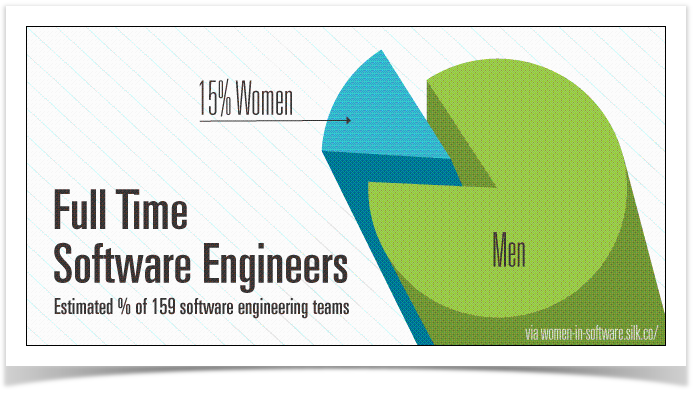 Image Modified
Image Modified
Silk.com has Started an Interactive Database to Track the Number of Women Engineers in Tech
Source: Tech Cocktail - July 29, 2014
Silk, a platform that allows anyone to transform their content in an easily readable and more engaging format, has recently started compiling data on the women engineers in tech. With recent attempts by large tech companies like Google and Facebook to increase transparency about the number of women among their ranks, the project is an attempt to further highlight the need the issue of this lacking of diversity among various tech companies – looking specifically at women in software – and to look further into the reasons behind how to improve those numbers.
According to Alice Corona, a data journalist at Silk, this Women in Software Silk was self-initiated by the company. Utilizing data gathered from sources like Randy Olsen from the US Institute of Education Science, Tracy Chou (a software engineer at Pinterest), Crunchbase, AngelList, and others. Because of Silk’s simple engagement tools, users can easily sort through the data by various filters: industry (such as the gaming industry, computer software, financial services, and others), city, and type (nonprofit, privately held, or public). Click to read more...
 Image Modified
Image Modified
How to Get Ahead as a Woman in Tech: Interrupt Men
Source: Slate - July 23, 2014
Who talks over whom? This interesting informal study takes a look at how frequently and how differently men and women interrupt.
Read the full story
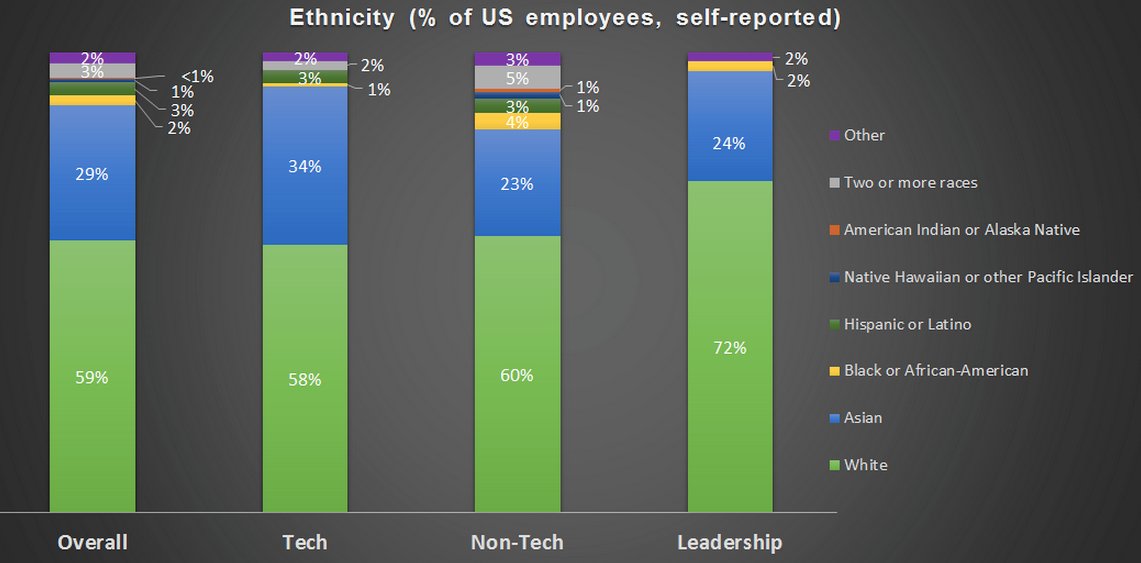 Image Modified
Image Modified
Source: Business Insider - July 23, 2014
Twitter disclosed the diversity numbers for its global and U.S. employees Wednesday, following in the footsteps of Google, Facebook, Yahoo, and LinkedIn.
Like these companies, Twitter is composed of a workforce that's primarily white and male, especially when it comes to tech-related positions.
At Twitter, 70% of employees are male and 30% are female. When you look at the numbers for tech-related jobs, that ratio switches from 90% male employees to 10% female workers. The statistics are split straight down the middle in terms of gender for non tech jobs, and male employees account for 79% of leadership positions within the company.
Twitter admits that it has a lot of work to do in the diversity department. As part of its initiative to improve diversity in Silicon Valley, Twitter says that it supports Girls Who Code, a nonprofit organization dedicated to helping women get into computer engineering. The social media giant also mentions that it regularly hosts Girl Geek Dinners in San Fransisco and Boston.
Read more: http://www.businessinsider.com/twitter-workplace-diversity-numbers-2014-7#ixzz38WRMxfBz
 Image Modified
Image Modified
Some Universities Crack Code in Drawing Women to Computer Science
Source: New York Times - July 18, 2014
One of the reasons so few women work in tech is that few choose to study computer science or engineering. Only 18 percent of computer science graduates in the United States are women, down from 37 percent in 1985.
At a few top college programs, though, that appears to be changing.
At Carnegie Mellon University, 40 percent of incoming freshmen to the School of Computer Science are women, the largest group ever. At the University of Washington, another technology powerhouse, women earned 30 percent of computer science degrees this year. At Harvey Mudd College, 40 percent of computer science majors are women, and this year, women represented more than half of the engineering graduates for the first time.
These examples provide a road map for how colleges can help produce a more diverse group of computer science graduates. Click to read more...
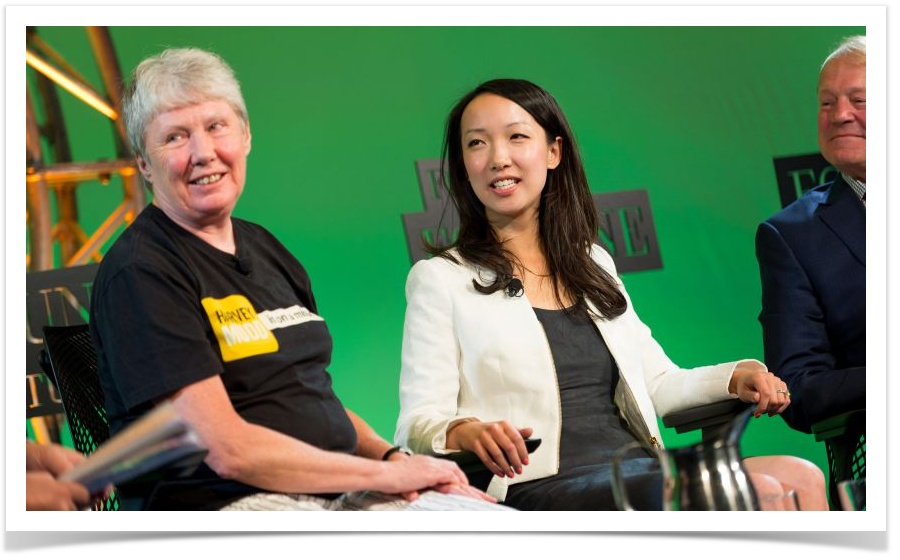 Image Modified
Image Modified
College president, panelists weigh in on closing gender gap in STEM
Source: Fortune - July 15, 2014
Efforts to close the gender gap in science, technology, engineering and math have been successful, especially when they include early education, Harvey Mudd College President Maria Klawe said during a recent panel discussion. The panel talked about the college's success in making women a majority of its engineering graduates, which was praised by panelist Clara Shih, a tech company CEO.
Klawe and her team started by including more women in their recruiting brochures, and Klawe wrote a personalized note to all of the female engineering candidates who applied to Harvey Mudd College. STEM has long faced difficulties attracting women, but Klawe decided to rebrand the program with the idea that women in STEM should be considered normal. “We framed [engineering] as creative problem solving,” said Klawe, “I have yet to meet a young person who doesn’t like to be creative and doesn’t like problem solving.” Click to read more...
 Image Modified
Image Modified
Initiative aims to bring more women, minorities into STEM Fields
Source: US News - July 10, 2014
A new initiative is teaching faculty at 20 colleges and universities how to attract more women and other underrepresented minorities such as Hispanics and African-Americans to science, technology, engineering and math. The program, called Teaching to Increase Diversity and Equity in STEM, also funds changes to make STEM curricula more inclusive, begin mentoring programs and foster a sense of community on campus.
Fourteen schools, including Howard University in the District of Columbia and University of Dayton in Ohio, will receive up to $300,000 for work completed over the next three years that's in line with the initiative. These institutions and other schools in the initiative will receive guidance on how faculty can create atmospheres for supporting underrepresented minorities in STEM. Click to read more...
 Image Modified
Image Modified
NCWIT Pacesetters at the White House Summit on Working Families
Source: NCWIT - June 23, 2014
Today, at the White House Summit on Working Families, The National Center for Women & Information Technology (NCWIT), a national non-profit focused on increasing women’s participation in computing, announced an aggressive commitment to add 3,500 new technical women to the U.S. talent pool by 2016 through the NCWIT Pacesetters program.
In this unique program, senior change leaders come together across academic, corporate, and entrepreneurial organizational boundaries to try innovative approaches to increase women’s participation in computing fields and careers. Pacesetters’ approaches vary widely. Some examples are: In Reach (working with women already on campus or in the workplace and motivating them to try technical careers), Creating Community and Visibility (partnering with community and organizational groups to recruit and advance technical women), Influencing the Influencers (communicating with influencers to have them encourage and advocate for women), and Tapping New Pools of Talent (seeking non-technical women and giving them a path to technology).
Improving the gender balance in computing can lead to a more diverse and competitive workforce while offering families more stability. Computing-related occupations are projected to be the fifth fastest growing segment of the professional workforce through 2022, and computing has the second highest median annual wage of all occupational categories. However, in 2013, although women held 57% of all professional occupations in the U.S. workforce, they only held 26% of computing occupations. Read full article
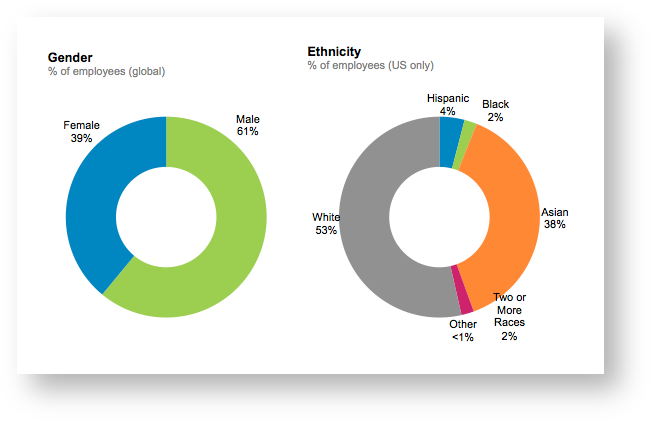 Image Modified
Image Modified
LinkedIn's Workforce Diversity
Source: LinkedIn Official Blog - June 12, 2014
Reflecting on the imbalance among women and minorities in the overall tech industry, along with Google’s recent decision to publish their workforce diversity numbers, we at LinkedIn felt that we also wanted to be transparent with regard to our employee demographics.
There are currently more than 5,400 LinkedIn employees working in offices from Mountain View to Sao Paulo to Bangalore. Over the past few years, we’ve experienced tremendous growth and have become a truly global company, but in terms of overall diversity, we have some work to do. Click here to read more...
 Image Modified
Image Modified
LEGO will make new female characters with science jobs
Source: The Washington Post - June 5, 2014
At long last, LEGO will actually have new female figurines who do something other than bake and hang out at the beach.
The Denmark-based toy company has approved new designs for female scientist, paleontologist and astronomer characters from its LEGO Ideas online competition.
“We’re very excited to release Ellen Kooijman’s Female Minifigure set, featuring 3 scientists, now entitled “Research Institute” as our next LEGO Ideas set,” LEGO said in an official statement. “This awesome model is an inspiring set that offers a lot for kids as well as adults.”
At long last, LEGO will actually have new female figurines who do something other than bake and hang out at the beach.
The Denmark-based toy company has approved new designs for female scientist, paleontologist and astronomer characters from its LEGO Ideas online competition.
“We’re very excited to release Ellen Kooijman’s Female Minifigure set, featuring 3 scientists, now entitled “Research Institute” as our next LEGO Ideas set,” LEGO said in an official statement. “This awesome model is an inspiring set that offers a lot for kids as well as adults.” Read more...
 Image Modified
Image Modified
How to Get Girls Into Coding
Source: New York Times - June 1, 2014
What if, instead of trying to guess at what might get girls interested in technology, we looked at what’s already on their screens? While parents often worry about recreational “screen time,” some educators now believe that gaming could be a way to get girls interested in coding, and even to increase the numbers of girls in STEM — science, technology, engineering and math — classes and schools. Reshma Saujani, founder of the nonprofit organization Girls Who Code, said, “We have to meet them where they are.” Continue reading the main story
 Image Modified
Image Modified
First Person / The power of girls
Here's how an all-girls education can make a difference
Source: Pittsburgh Post Gazette - May 31, 2014
Despite our efforts to educate and empower them, women continue to make less money than men and are largely absent at the top ranks of leadership. Clearly we need to shift our social systems to accommodate female success. One important means of promoting equality in the workplace may involve giving all-girls schools a longer look. Read more...
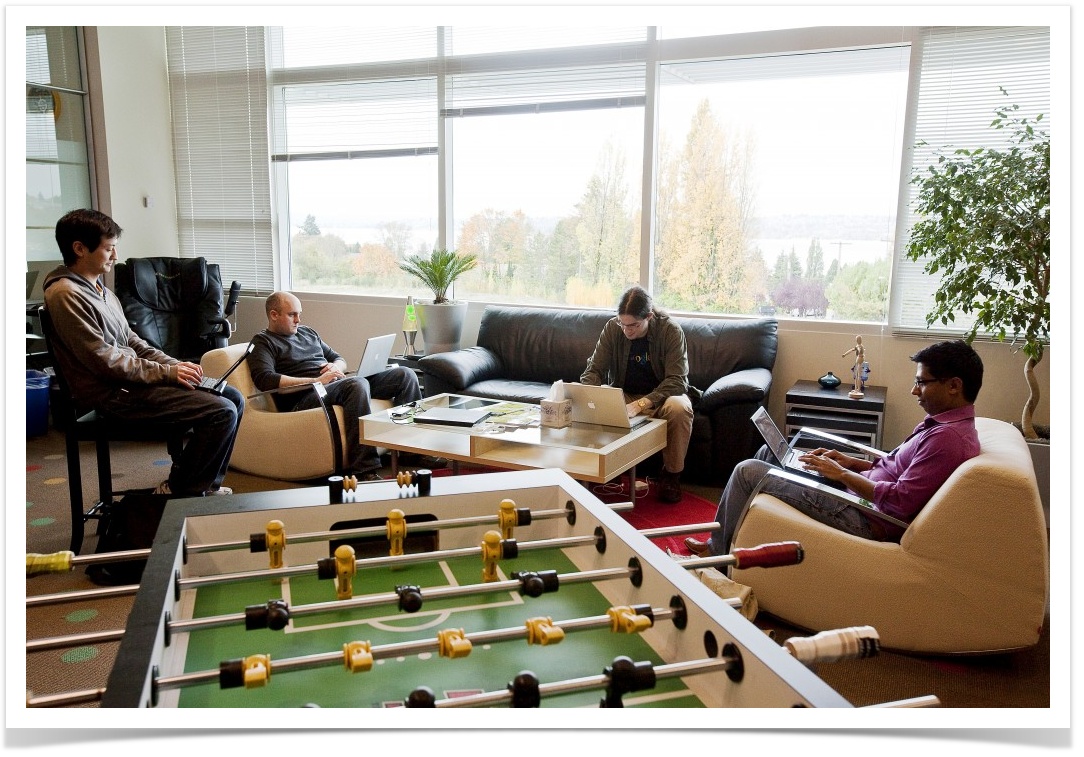 Image Modified
Image Modified
Google Releases Diversity Data
Source: PBS.org - May 28, 2014
Google’s gender-diversity should be better than Humin’s, not just 17 percent. Consider that women comprised 37 percent of the computer science class of 1987. Because of the unfair hurdles they face, women are getting discouraged from studying computer science, and the percentage had fallen to 18 percent by 2012. But about a quarter of today’s pool of highly experienced software developers is female, and a company such as Google — which has its pick of the crop of new graduates as well as experienced engineers — should have far greater diversity. Click to read more…
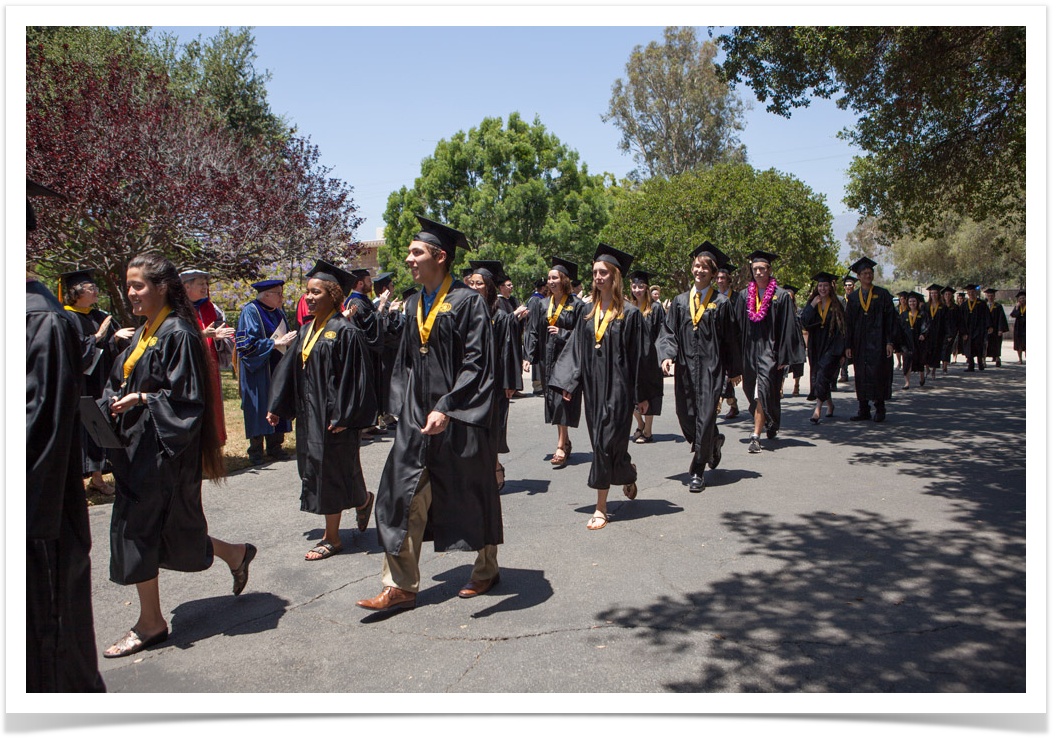 Image Modified
Image Modified
Harvey Mudd Graduates Landmark Class
Source: Harvey Mudd College News - May 20, 2014
For the first time in its history, Harvey Mudd College awarded more engineering degrees to women than to men at its annual commencement, May 18. Fifty-six percent of students who graduated this spring in engineering were female, and 44 percent were male. Click to read more…
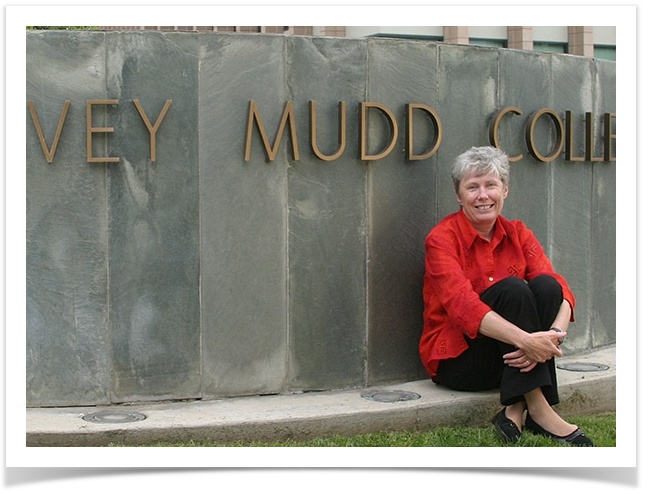 Image Modified
Image Modified
Impostoritis: A Lifelong, but Treatable, Condition
Source: Slate.com - March 2014
The female president of Harvey Mudd College on how women in STEM can cope with feeling like they don’t belong.
Impostor syndrome is the frequent feeling of not deserving one’s success, and of being of a failure despite a sustained record of achievements. Highly successful people often experience it throughout their careers, especially when they are members of a group that is underrepresented in their profession. Click to read more…
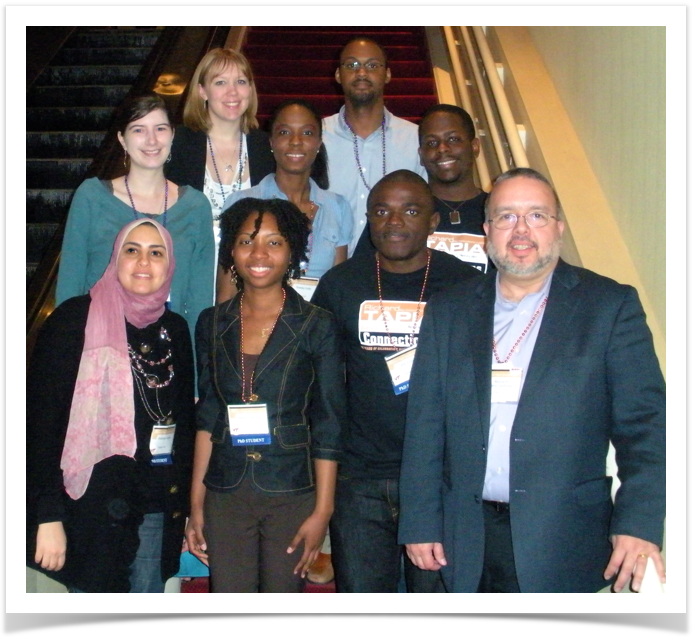 Image Modified
Image Modified
Diversity Efforts at Virginia Tech
Source: Scott Midkiff and VT website
Diversity is a key element to the success of organizations, and CS@VT is committed to establishing and fostering a diverse community of computer scientists at Virginia Tech and worldwide.
Through the 1980’s, CS@VT had 30%+ women enrolled in its undergraduate program. Many prominent researchers from underrepresented groups-including Lucy Nowell, Cheryl Seals, and Jamika Burge-emerged from VT’s graduate program. But, after the dot.com bust in 2001, enrollment in CS programs fell at Virgina Tech and nationwide, and diversity enrollment was hit harder. Now, thanks in part to the programs and resources described here, their diversity footprint is increasing again. Click to read more…
_____________________________________________________________________
 Image Modified
Image Modified
Missing From Science Class
Source: NY Times - December 11, 2013
A big reason America is falling behind other countries in science and math is that we have effectively written off a huge chunk of our population as uninterested in those fields or incapable of succeeding in them.
Groups like the National Action Council for Minorities in Engineering have been showing minorities and girls that they can imagine themselves as scientists or engineers, providing role models to speak to middle school students and helping high schools set up engineering academies. A five-year program funded by the National Science Foundation at Bowie State University, a historically black university in Maryland, provides training and mentorship to high school science and math teachers and a summer science academy to 10th graders.
For both women and minorities, academic and social support is critical. The University of Maryland, Baltimore County has programs for minorities and women that provide students with scholarships, mentorship, internships and involvement in cutting-edge research. Students enrolled in its programs are much more likely to graduate than other comparable students.
More than half of the American population will be made up of minorities in 2043. And the number of women who are the primary or sole earner in their families is growing. Those trends make it imperative that one of the most dynamic sectors of our economy no longer remain a male and largely white and Asian domain. Click here to read more...
Bye-Bye, boys' club?
Why the new IT may be a woman's world
Source: InfoWorld - November 22, 2013
There's been a lot of attention this year to the sorry state of women in technology fields. But maybe we're missing the real issue.
It's true that women remain stuck at about 30 percent of the technology workforce, not much different than in 1990, when I as a young reporter working at the IEEE did a big news story reporting on the National Science Foundation's call to action to solve the problem of women's underrepresentation in computer science and engineering. Even in those early days of populist computing, there were fears that women's participation was declining.
Despite all that, there are signs that women may finally be joining the tech industry. But for a reason that should worry men: The nature of tech jobs may be changing to favor women's strengths and interests, while many of those that tap into men's strengths and historical base may be fading away, replaced by the cloud and other forms of automation. Click to read more...
 Image Modified
Image Modified
Rising to the STEM Challenge
Source: HPC Wire - September 19, 2013
Around the world, community, industry and academic leaders bemoan the “skills gap,” the divide between the profile of those seeking employment and the actual requirements of the marketplace. A number of studies have reported that during the next decade, there will be millions of available jobs in so-called STEM fields (science, technology, engineering and mathematics) and not enough qualified candidates to fill those positions. Click here to read more…
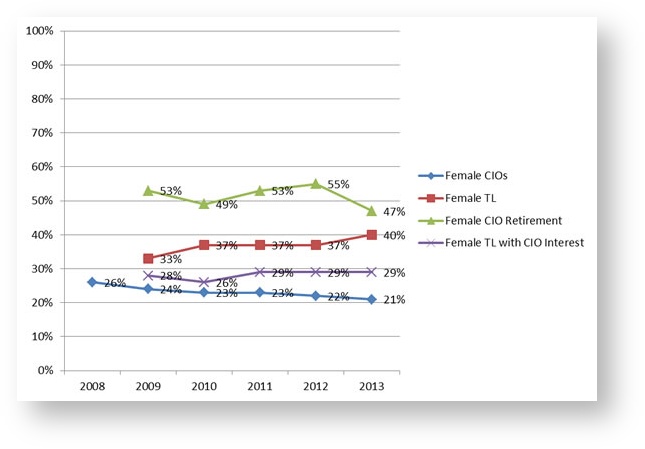 Image Modified
Image Modified
In Higher Education, Fewer Women Graduate To CIO
Source: InformationWeek Government - June 18, 2013
From 2008 to 2013, the percentage of female CIOs declined five percent, from 26% to 21%. There could be any number of reasons why the percentage of female CIOs declined.
One reason might be a finding from the TL research that showed a consistently smaller percentage of female TLs who are interested in becoming CIOs than their male counterparts. In addition, female CIOs were retiring faster than male CIOs. Another reason could be the widely reported gender disparity in degree-major technology disciplines. And it could be the fact that female TLs and CIOs were retiring sooner than the male TLs and CIOs.
Despite this list of bad news for gender parity in the higher education CIO ranks, there might be positive change on the horizon. Click here to read more…
 Image Modified
Image Modified
How To Increase the Number of Women in Tech
Source: NCWIT - September 30, 2009
Did you know that while many tech companies struggle to find technical talent, the problem may not be due to a lack of talent, but rather due to a lack of awareness on the part of employers? Vivek Wadhwa, technology entrepreneur and academic, cites NCWIT’s research in this Wall Street Journal blog post stating that to address this issue, companies should re-focus their attention. They should take a closer look at the way jobs are being defined, and the types of technical positions being filled by women.
Wadhwa cites important research indicating that a limited outlook on the part of employers contributes to the problem. Often times, when making hiring decisions, employers review diversity data at the company level rather than at the departmental level. “If data were analyzed at the departmental level, particularly in technology, [executives] would realize that the deck is stacked against women at every stage of the game.”
For the best available data about the current state of affairs for technical women, read NCWIT’s resource, Women in IT: The Facts.






